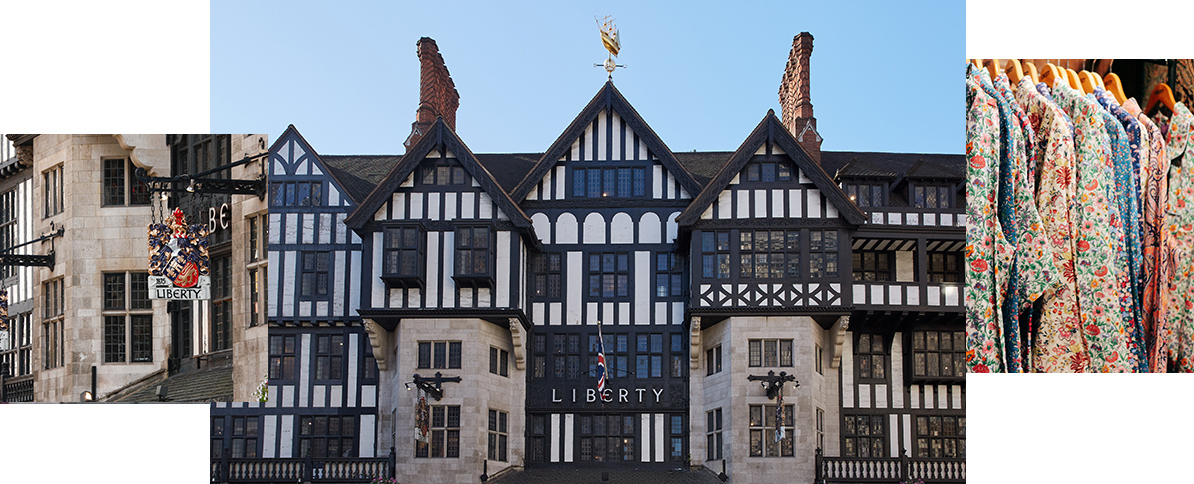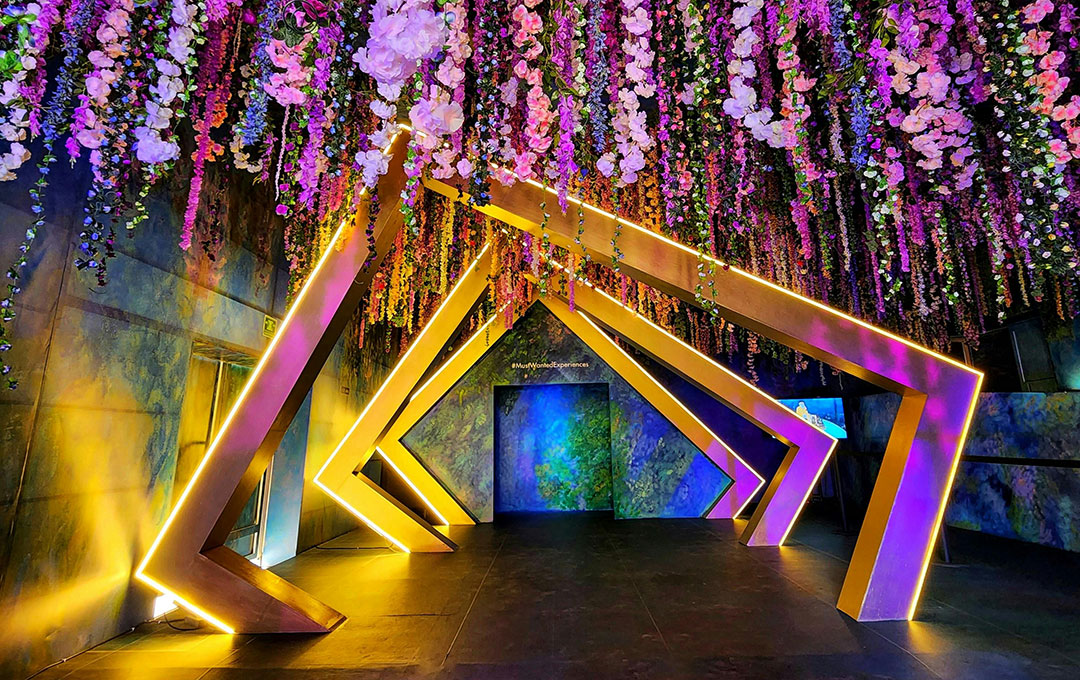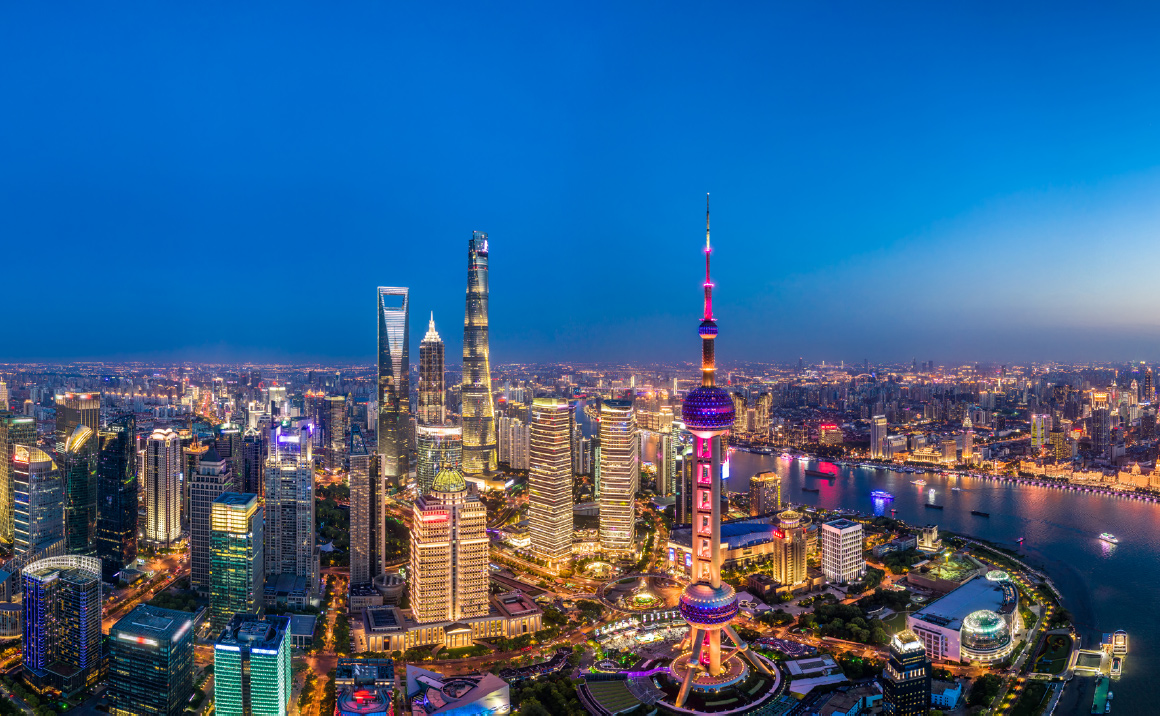The future of
DEPARTMENT
STORES
Liberty and SKP
Liberty and SKP
Liberty and SKP
Liberty and SKP
Liberty and SKP
Liberty and SKP
Liberty and SKP
Liberty and SKP
Liberty and SKP
Liberty and SKP
Despite the negative headlines and dire predictions, many department store groups across the world have confounded their critics and continued to thrive. At the heart of this defiance is a steadfast approach to brand identity. By embracing a core identity – whether grounded in heritage or modernity – department stores are planting their feet in the world of retail.
Here we explore just how such strategies are proving successful for global department store brands – and speak with Julian Beer, Liberty Store Director and Simon Mitchell, Co-Founder of Sybarite to discuss two contrasting approaches to enticing customers.

Nobody opening the door into the wood-panelled elegance of Liberty can be in any doubt that they are stepping into a piece of the city’s retail heritage. Yet while Liberty embraces its historic building and West End location to underpin the brand, its focus is on employing creative staff to provide a unique style of customer service.
“At Liberty, we believe the essence of retail goes far beyond simple transactions; it’s about creating unforgettable, personal experiences. With their ability to curate and evolve experiences through brand selection and positioning, department stores are in the prime position to be leaders in experiential retail,” says Liberty Store Director, Julian Beer.
That commitment to exceptional customer care shines through, both in-store and online, and has helped the retailer in crafting an atmosphere that is not only immersive but also deeply personalised. This dedication is underpinned by its team selection, which predominantly consists of artists, infusing a unique creative perspective into every aspect of Liberty’s service.
Such an approach showcases the bringing together of physical real estate and retail storytelling to create a memorable experience for customers that keeps them coming back, with Liberty’s physical presence being “more than just a shop” and instead, a “historic landmark and a destination in its own right.”
“Our iconic Tudor-revival building not only enhances the Liberty allure, but makes each visit a memorable event: both a tourist attraction and a shopping experience, emphasising our store as a cultural and commercial landmark that uniquely blends heritage with modern retail,” says Beer.
And in a world where department stores are competing with the endless aisles of the internet, Liberty has deliberately pivoted to become a curator, enriching interactions with artistic insight and passion.
Especially evident in Asia, a futuristic element has come to the fore for department stores. A prime example is SKP and its ‘alter-ego’ brand, SKP-S. SKP Beijing is celebrated as the no. 1 department store in Asia, while SKP-S is recognised as the benchmark of avant-garde experiential retail environments. Rebranded, repurposed and reimagined from a shopping mall to a luxury department store in 2016 – SKP Beijing was launched with a brand-new
architecture and brand identity and established itself on the global stage. The evolution of SKP has since expanded – with SKP locations in Xi’an, Chengdu and Wuhan, each location witnessing design innovation and ground-breaking retail strategy. The first SKP-S was launched in 2019, with the fourth unveiled in summer 2024. The SKP-S environments have evolved over these four episodes.
Customers have been invited on a journey into
another dimension: to otherworldly destinations commencing from ‘Journey to Mars’ (Beijing), visiting ‘Rebirthed Earth’ (Xi’an), travelling to a ‘Parallel World’ (Chengdu) and most recently finding their way to a ‘Paradox Universe’ (Wuhan). Each experience weaves a narrative that differs according to its location, whilst having a global relevance, and is perfectly in tune with the Gen-Z customer.
its next-generation brand extension
SKP Beijing’s design is a result of Sybarite’s holistic approach and ability to work from the micro to macro. ‘SKP Curve’ was created to become synonymous with SKP department stores, to give a sense of place and create heritage. A cohesive identity was established encompassing branding, interior design and architecture. The subliminal sense of ‘SKP familiarity’ and the associated prestige was designed with scope and scalability in mind.
Three years later, architects Sybarite were invited by SKP to collaborate with Gentle Monster in Beijing to conceive and create this immersive and one-of-a-kind space that moves the dial for the future of retail experience. Complete with glass tunnels, domed environments, infinity escalators and kinetic art installations, the space is designed to “transport the shopper to another realm in an imagined future, escapist dream-like space” as Sybarite Co-Founder and Creative Director of SKP architecture and concepts, Torquil McIntosh describes it.
Opened 2016 & 2019
SKP Xi’an was the next expansion after the success of SKP Beijing. Spanning 250,000 m² across 20 floors, it features over 1,000 top-tier international and domestic brands. More than a retail destination, SKP Xi’an includes a range of recreational and lifestyle amenities. The luxury department store hosts a multi-storey event space, boutique cinema, cafes, diverse dining options, and a garden terrace.
Later in 2022, SKP-S Xi’an opened on the 4th floor of SKP Xi’an department store. It offers an immersive laboratory-like retail experience that contrasts with the luxury department store’s other 19 floors.
Opened 2018
The master planning of SKP Chengdu represents a new blueprint for retail – existing at street level as a ‘branded park’ and leading to a sunken world of retail unfolding below. Cleverly bookended by the contemporary elegance of signature SKP department store at one end and the cutting-edge next generation department store SKP-S at the other – this creates a gravitational pull between both for the customers and their momentum-driven retail journey. It demonstrates the ongoing requirement for department stores to reinvent their formats and take a sustainable approach.
Opened 2022
In the Summer of 2024, SKP Wuhan was unveiled, and is another example of placemaking and a new format for retail, combining department store and adjacent pedestrianised walkway along a river canal. Here there is the core offer of SKP as well as the brand extensions. The ecosystem of SKP expands in tune with customer and context – here the city is injected with youth culture. These environments and their extendable ‘universes’ are forward-facing destinations at heart, yet they undeniably hark back to a past sentiment when department stores were seen as anchors in terms of city planning, regarded as multi-functional places where shopping, entertainment and social activities intersect.
Opened 2024

Whether it’s Bloomingdale’s renewed pledge to ‘dream big’ or the superbrands of Selfridges, the extraordinary, opulent architecture of La Samaritaine in Paris or the eco-approach of Peek & Cloppenburg’s ‘conscious fashion’ store in Berlin – department store groups have had to dig deep to innovate.
There may seem little connection between the ultra-futuristic approach taken by Asia’s most iconic department stores and the storied heritage of some of retail’s longest-standing brands, but understanding how to leverage their dominant, prime buildings and layer services, experience and curation provides a common thread that ties them all.
What is common among successful department store groups is a willingness to experiment, innovate and refresh the physical format. In the US, Saks Fifth Avenue has moved the beauty section off the ground floor in one of its stores, anticipating that shoppers will explore other areas of the store along the way.
In Japan, speciality stores like Parco – with its highly popular floor dedicated to Nintendo – and Loft, known for its unique stationery, are also thriving formats. In South Korea, many department stores function as mini shopping centres, featuring a vast range of brands and products.
And while the market in China is more challenging, SKP is a notable success – having focused on innovative, high-impact store design. They have a significant presence at the luxury end of the market, along with an emphasis on high-quality customer service, personalisation, membership offers and exclusive events.

Yes, a department store brings together multiple brands under one roof, but that roof represents so much more. And whether erring on the side of historic prevalence or futuristic experience, by embracing a core identity and a willingness to innovate, department stores can continue to define their space in the ongoing evolution of retail.
With both international and domestic retailers setting up shop along the tree-lined streets of Shanghai, explore why the French Concession is a retail, dining and cultural hotspot.

